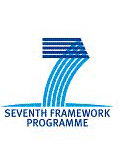Moving Passenger Screening Using a Fast Millimetre Wave FMCW Radar
| Author(s) | Hantscher Sebastian(*), Schlenther Beverly(*), Lang Stefan(*), Hägelen Manfred(*), Essen Helmut(*), Tessmann Alex(**) |
| Organization(s) | *Fraunhofer FHR (Germany) **Fraunhofer FHR (Germany) |
| Conference | 31st Progress In Electromagnetics Research Symposium (PIERS 2012) |
| Conference Date | 27 - 30 March 2012 |
| Conference Location | Kuala Lumpur (Malaysia) |
|
Abstract The currently developed scanners used for security checks on airports do not solve the task of handling increasing passenger flows. Moreover, they have a negative impact on the privacy of the persons to be screened. For this reason, a prototype of a person scanning system is introduced carrying out a full body scan of moving persons. The radar operates in the W band at 97 GHz providing an added value to existing security related systems as it supports them by detecting large and dangerous weapons (such as explosive belts) with low financial effort. However, the application is not restricted to the airport security checkpoint or the airport terminal but it can be further used for the protection of critical infrastructures with high passenger throughput, e.g., mass transport systems. The radar module contains a voltage controlled oscillator which is able to tune the frequency between 96 GHz and 99 GHz at a RF output power of 10 dBm. The conductor-backed coplanar waveguide technology in combination with metamorphic cascode HEMTs has been demonstrated to be highly suitable for the development of millimetre-wave low-noise heterodyne receiver MMICs. The radar consist of 5 receive channels in order to capture back scattered energy from different aspect angles. The presented 4 channel receiver operates between 84 GHz and 104 GHz and achieved a maximum conversion gain of 12 dB and an average noise figure of 3.5 dB. The developed radar front end uses an integrated FMCW radar chip with separated transmitter and receiver for increasing the dynamic range) and allows a coherent reception of all 5 receive channels. This coherence was obtained by using chirp signals which were derived by the same oscillator as well as by a precise chirp linearisation. Carrying out a full body measurement of a moving person, a stimulant of an explosive belt, a grenade and a gun worn concealed under a jacket could be detected and localized on the body without violating the privacy at any time. |
|
Document Actions


